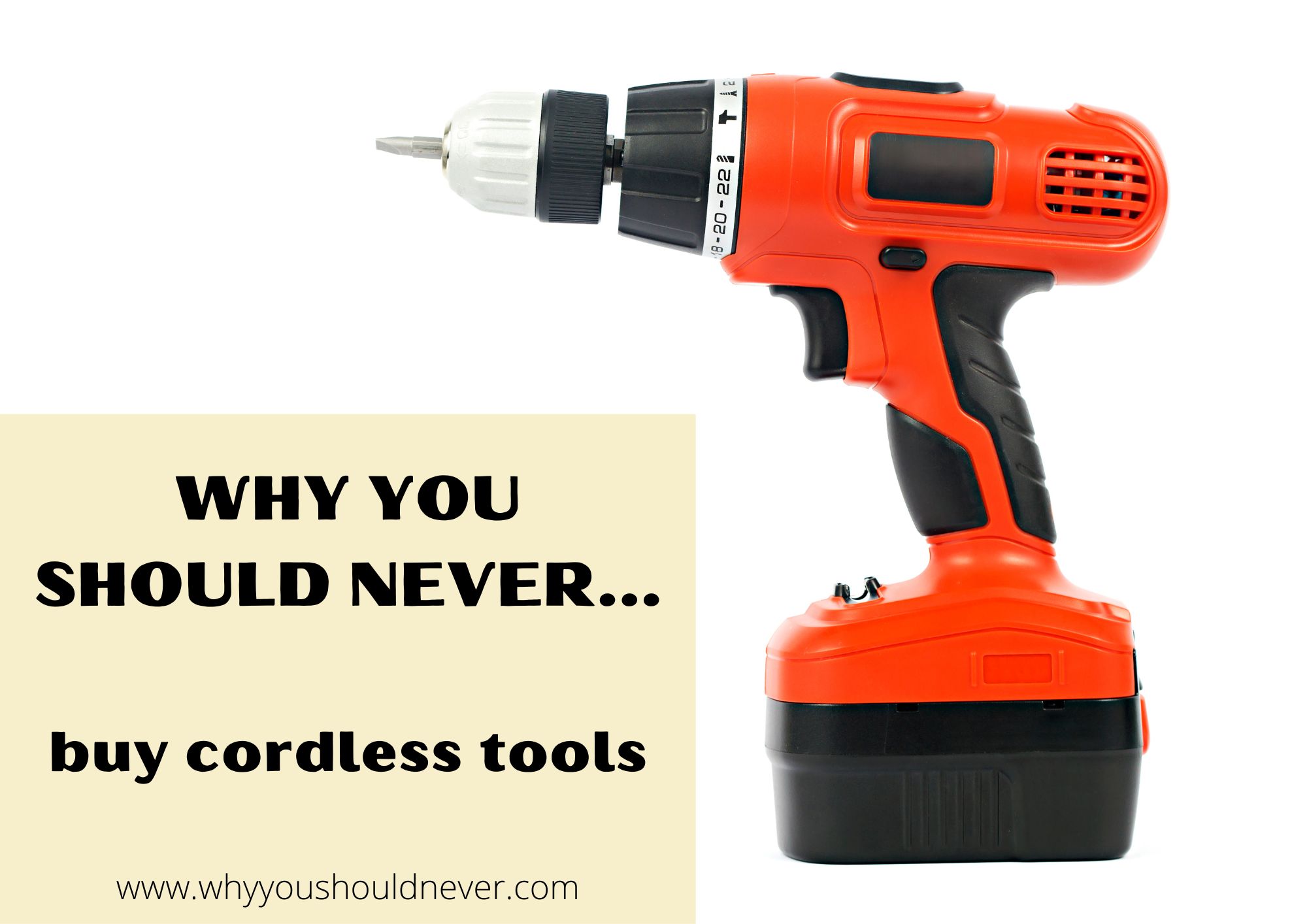![]()
Why You Should Never Buy Cordless Tools
In the not-so-distant past, having tools meant wrestling with cords. You know, that frustrating dance of finding the nearest power outlet, untangling a mess, and trying not to trip over the damn thing!
Cordless tools looked like they came straight out of a sci-fi movie – no cords, no fuss, just pure, unadulterated convenience. What’s not to love? A whole world of DIY dreams, right at our fingertips.
Well, don’t get too carried away with the fantasy, because there are downsides to these cord-free wonders. I know, it’s a bummer. But hey, sometimes reality bites.
8 reasons why you shouldn’t buy cordless tools
1. Battery lifespan and replacements
First and foremost, batteries die. Period. Not like a metaphorical sunset, but the real “I need a replacement or this thing is useless” kind of death. And sometimes, much sooner than you’d expect.
Depending on usage and quality, a battery can last anywhere from 1-5 years. Then, you’ll need to dish out more money for replacements, which can get costly. And if your tool model gets discontinued? Good luck finding that specific battery.
2. Performance inconsistency
Ever been in the middle of a project and noticed your drill’s slowing down? That’s because as the battery drains, performance usually decreases. Unlike corded tools that offer consistent power, cordless tools can waver, especially when the battery is running low.
3. Environmental concerns
Batteries aren’t Mother Earth’s BFF. Most contain chemicals like nickel-cadmium, which, if not disposed of properly, can harm the environment. Not to mention, producing these batteries consumes natural resources.
So, while you’re enjoying the freedom from cords, nature might be paying the price.
4. Limited power compared to corded tools
Cordless tools might be great for light tasks, but when you need some real oomph, corded tools are the heavy lifters. High-demand tasks, like cutting thick materials or prolonged usage, may leave cordless tools gasping for air (or more accurately, juice).
5. Unexpected interruptions
Ah, the good old “I swear it was fully charged” moment. With cordless tools, you’re always at the mercy of battery life. Mid-project, and the battery kicks the bucket? That’s a forced coffee break you didn’t plan on. With corded tools, as long as there’s electricity, you’re golden.
6. Waiting for the tool to charge
This is my biggest gripe, and it’ll probably be yours, too. I’ve lost count of the amount of times I’ve wanted to vacuum my living room or drill a hole, only to realize the tool’s battery is flat.
And waiting? Well, that’s not always a quick affair. Some tools can take hours to fully recharge. It’s like craving a cup of coffee and then realizing you have to grow the beans first!
7. They’re usually more expensive
The convenience of cordless tools, more often than not, comes with a heftier price tag. This is generally because of the integrated technology, the battery pack, and the design innovations meant to keep them compact. You’re essentially paying a premium for the freedom to work without a cord.
8. They’re bulkier
Batteries add weight. It’s not rocket science, it’s just… well, science. If you’re working overhead or in tight spots, that extra heft can be a literal pain. Corded tools, minus the battery bulk, are often sleeker and easier to handle.
Final word
It’s a tale as old as tools themselves: to cord or not to cord? That seems to be the question.
Whether the allure of cordless freedom speaks to you or the tethered reliability of a trusty cord tugs at your heart, only you can decide which road to take. I tend to have both, if the price permits, because I haven’t fully put my trust in cordless tools.
The dance between innovation and reliability is intricate. But as with any dance, it’s all about finding the rhythm that suits you best. So, while the world may move towards a cordless future, sometimes, the classics, like a good ol’ corded drill, never truly go out of style.
No matter what you choose, be informed about your decision, consider the advantages and drawbacks, and hope that your tools are as dependable as you are when using them.
